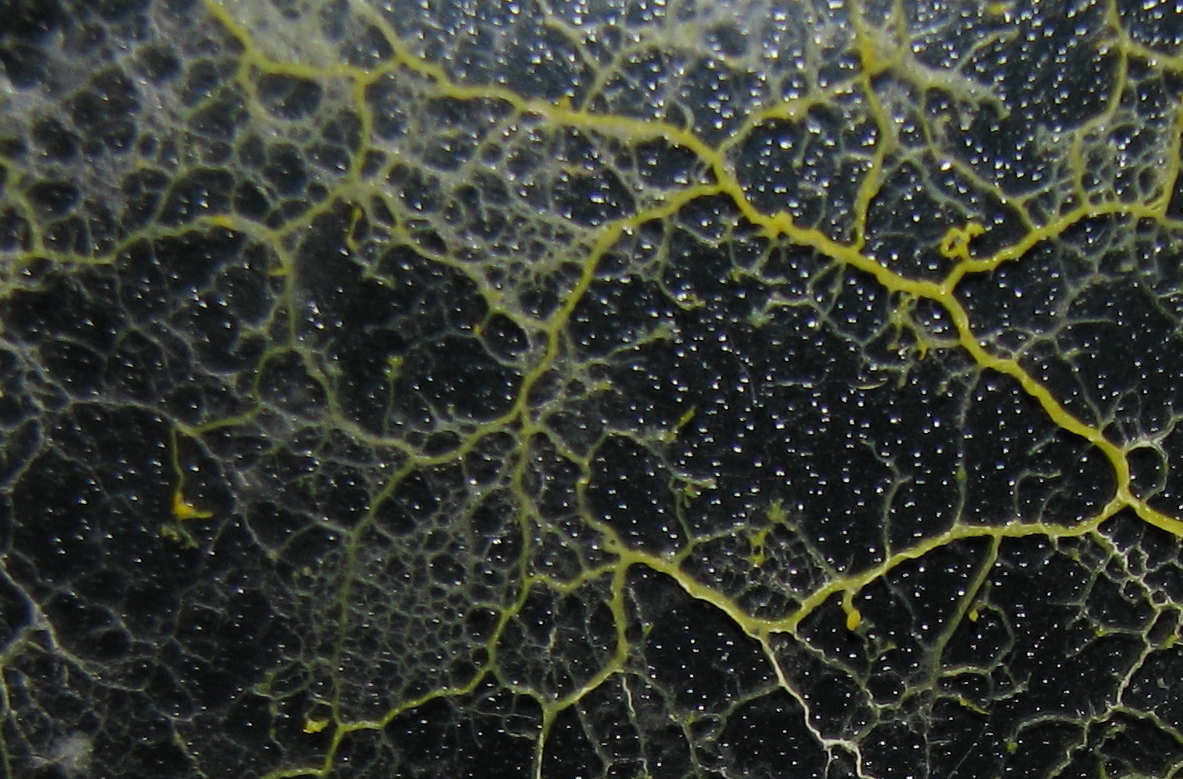Architecture Degree and Masters: Studio 7 Emergence
Slimemould Experiments: 2012 Update : The first few weeks of the studio we played around with slimemould and updated a wiki with the results. These are the most interesting bits of my contributions.
Kromalginate is seaweed based mould making solution that produces very fine grain negatives of a positive,. Then I used the growth medium, agar, which is also a seaweed based product, to create growth environments for the slimemould such as my nose and ear shown below. Great fun.
Week 3 | research
Kromalginate moulds and agar work really well together. And some slimy patterns.
 |
 |
 |
 |
 |
 |
 |
 |
Week 2 | research
I've put together a kind of slimey cave made of agar for my slime mould to inhabit. I left the camera going - I hope it's still growing well. It's constructed of panels of agar with a couple of reverse curves. There is a layer of darker dyed agar over the top for cosy darkness and then a large garbage bag over that for serious darkness. There is a path of rice that the slime has so far ignored.
 |
 movie 1
movie 1 |
 movie 2
movie 2 |
 |
 |
 |
I also had some other experiments running - some of which failed and some of which were a limited success. The main thing I learnt was that you can't have too much agar. If it dries out the slime mould is doomed.
 |
 |
 |
 |
 |
 |
 |
 |
Then there was the oat imbedded in agar experiment which turned into the car wreck inspired by Oron Catts and Symbiotica.
 |
 |
 |
 |
 |
 |
Week 1 | research
Agar is fun, and edible, but it's a laxative so think twice before pigging out.
I managed to cook my first slime mould experiment. Anyone else? I put an incandescent light over it and it must have been too hot for it. It curled up it's toes and died. I also tried to grow it on a slice of pear, but I think it was too sweet and probably too dry. The agar underneath and around it didn't keep it damp enough.
I've been taking photos of the slime mould so I'll put together an animation of it dying (sob): deathofaslimemould.mov
Here is a far more successful slime mould movie over about 20 hours: freshmould_ani.mov
Anne-Marie mentioned a course being run at Solid Solutions in the evenings of Tuesday and Thursday this week. I'm thinking of going - anyone else interested? http://www.solidsolutions.com.au/shortcourses.php
I've got hold of both books he recommended. One is The Prop Builder's Manual of Moulding and Casting Handbook / Thurston James and the other is The Mouldmaker's Handbook / Jen-Pierre Delpech and Marc-Andre Figueres. The Prop Builders Manual is particularly good as it's examples are interesting. Moulding of a real dead fish anyone?
Slimey Photos
On my plates (newest to oldest):
Lee A. Segel "Computing an organism" Proceedings of the National Academy of Science of the USA | March 27, 2001 | vol. 98 | no. 7 | 3639-3640
A simplified mathematical model of Keller and Segals' study on slime mould:
E. Keller AND L. Segel, "Initiation of slime mold aggregation viewed as an instability", J. Theor. Biol, 26 (1970), pp. 399--415. Could this be used to create a StarLogo representation of the movement of the mould?
